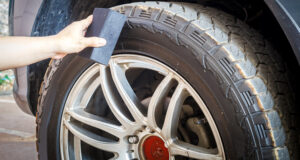Radiator leaks are common problems in various vehicles, and they need to be addressed promptly. Some of the indications of this issue include a low coolant level in the radiator, a dry overflow reservoir, or an overheating engine. Often, all you’d need is a radiator repair and not a replacement. You may not even have to drive your car to a repair shop. Aside from learning how to know if you have a clogged radiator, you should also study fixing simple leaks. After all, this can help you avoid costly repairs down the road.
Why do Radiator Leaks Occur?
It is possible for the leak to happen in various locations. For instance, in the radiator itself, there may be damage or corrosion to its core, allowing the coolant to leak out. If the issue is moderate to heavy, you may need to consider replacing your radiator. However, it gets a bit complicated when the leak comes from the hoses or lines. When they have cracks or holes, the cooling system may allow the coolant to leak. Keep in mind that over time, hoses get brittle, prompting them to start cracking.
It is also possible that the leak is coming from the hose connection points. If the clamps get loose or break, pressurized coolant will start to seep out. If the hoses of your radiator get extremely loose, they will pop off entirely, causing a major coolant leak. Before you attempt a radiator repair, ensure that the coolant and your engine have cooled down. Since the coolant is pressurized when hot, it can cause serious injuries. When you’re ready, follow the steps below:
First Step: Identify the Source of the Radiator Leak
When you see a coolant drip on your garage floor or driveway, it does not necessarily mean that you need to bring your vehicle to a service center. It is possible that you only have a loose drain valve, a leaky hose, or an overflowing reservoir. So, the first thing you need to do is identify the source of the radiator leak. You can do this by looking at the bottom of your radiator, radiator hoses, reservoir, and drain valve. You will see coolant drops collecting in one of those places.
Second Step: Determine the Gravity of the Issue
If you notice that the coolant is running instead of slowly dripping from your radiator, then it is likely that the leak is more severe. In this case, the damage may be too big to be repaired using a simple fix. It is important that you closely examine the leaking surface and check if there is a large crack in the reservoir or hose. If you think that the leak coming from your radiator is not that serious, then you have various options for stopping it.
Third Step: Using a Commercial Radiator Leak Stop Product
A radiator leak stop can fill the tiny holes in the cooling system of your vehicle. Often, it can stop a minor leak in your radiator, a hose, or overflow reservoir. You can go to an auto parts shop or a discount store and you will find this product. Simply follow the instructions in the container. Typically, the process involves pouring the contents into the radiator of your vehicle. However, make sure that the radiator is cool before you remove its cap. In some cases, the leak stop can only repair the issue temporarily. So, it is best to set your expectations accordingly.
Fourth Step: Monitor your Vehicle’s Cooling System
The leak stop product may have resolved the issue, but it is always possible for a small leak to grow bigger. So, always remember to watch the temperature gauge of your car, especially during the warmer months. Ideally, you should also perform a coolant flush on a regular basis to keep the radiator in good condition. Moreover, it will help if you examine the surface under the radiator from time to time. If you notice further leaking, then it is high time you consulted a mechanic. They should be able to check if there are other issues like power steering problems and potential brake system damages, among others.




I want to know types of radiators mainly used in construction machine. As well as to learn how to repair radiator plastic tank cracks, aluminum radiator core. Do you have any recommendation where and who to ask regarding this?